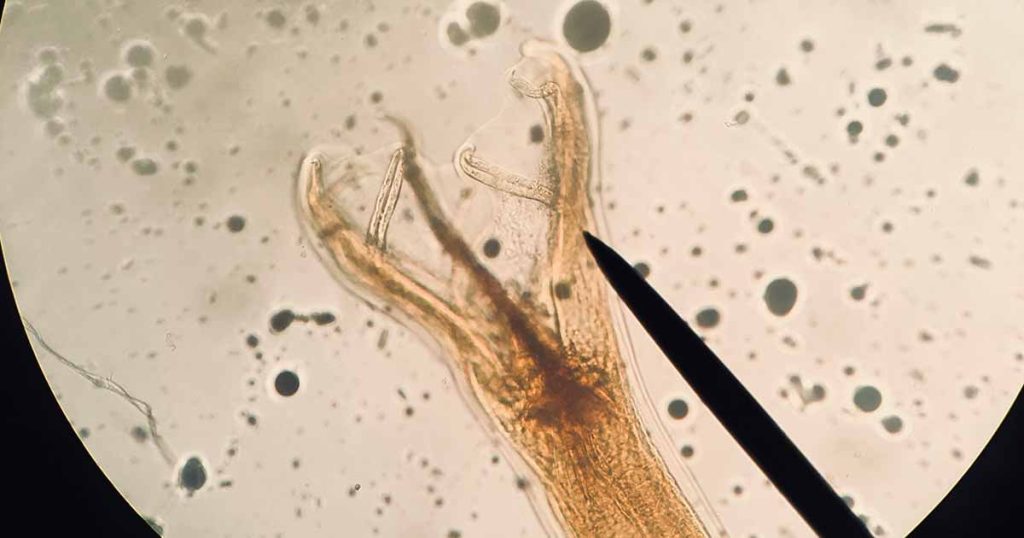TAKE THE PARASITE FORM
Fill in the PARASITE FORM and we will get back to you with advice on which test we recommend based on your symptoms!
Ancylostoma duodenale and Necator americanus (the human hookworms) are relatively small roundworms of up to 1 cm, mainly occurring in tropical zones such as countries in Central and South America, Africa and Southeast Asia. Ankylsotoma duodenale also occurs in southern Europe around the Mediterranean.
Human hookworms are found the soil and water in areas of the world with poor sanitation, poor quality of water and where fertilization with human feces occur.
Life cycle
Hookworms can enter the human skin directly in connection to walking barefoot from where it makes its way through the human skin through the blood circulation to the lungs where it is coughed up, swallowed and once in the intestine it burrows into the intestinal lining where it feeds on blood.
The infection and worm penetration into the skin occurs unnoticed, incubation is approximately a couple of couple of months up to a year.
Symptoms
Symptoms that arise in connection with hookworm infections and that are usually first noticed by the host are skin issues; red, swollen and itchy worm like streaks under the skin as well as pulmonary symptoms; perisitent and productive cough. In addition symtoms of infection are associated with a creeping sensation under the skin, abdominal pain and swelling, loss of appetite, nausea, headaches, heart palpitations and difficulty settling down with disturbed sleep and general weakness.
Anemia can occur as a result of blood loss which can manifest itself in fatigue, dizziness and a visily pale complexion. Common in hookworm infection is a condition called “cutaneous larva migrans” where skin reactions to migrations of the worm can be seen,
Ankylostoma ceylanicum (The dog and cat hookworm or zoonotic hookworm) as a hookworm species found in canines that spreads from animals to humans. Occurance of zoonotic hookworm infection is more common in tropical countries where animals roam freely and infected feces from a dog or cat are found in, among other things, soil and sand (beaches).
This is the only zoonotic hookworm infection known to create persistent infection in humans where it can also multiply directly in the human gut and migrate out from the gut to the muscles and under the skin.
Symptoms associated with zoonotic hookworm infection include: a crawling sensation under the skin, abdominal pain, swollen abdomen, dizziness, severe headaches, skin rashes, severe itching, exhaustion/fatigue, muscle pain, chronic productive cough and heart palpitations.
Sources: internetmedicin.se, netdoktor.se

Fill in the PARASITE FORM and we will get back to you with advice on which test we recommend based on your symptoms!
Copyright © – C Ahlqvist & The Better Option AB – 5593138588
Hi!
You can set up a FREE telephone consult with us. Just book it on our site and we can guide you to the best options for you.
